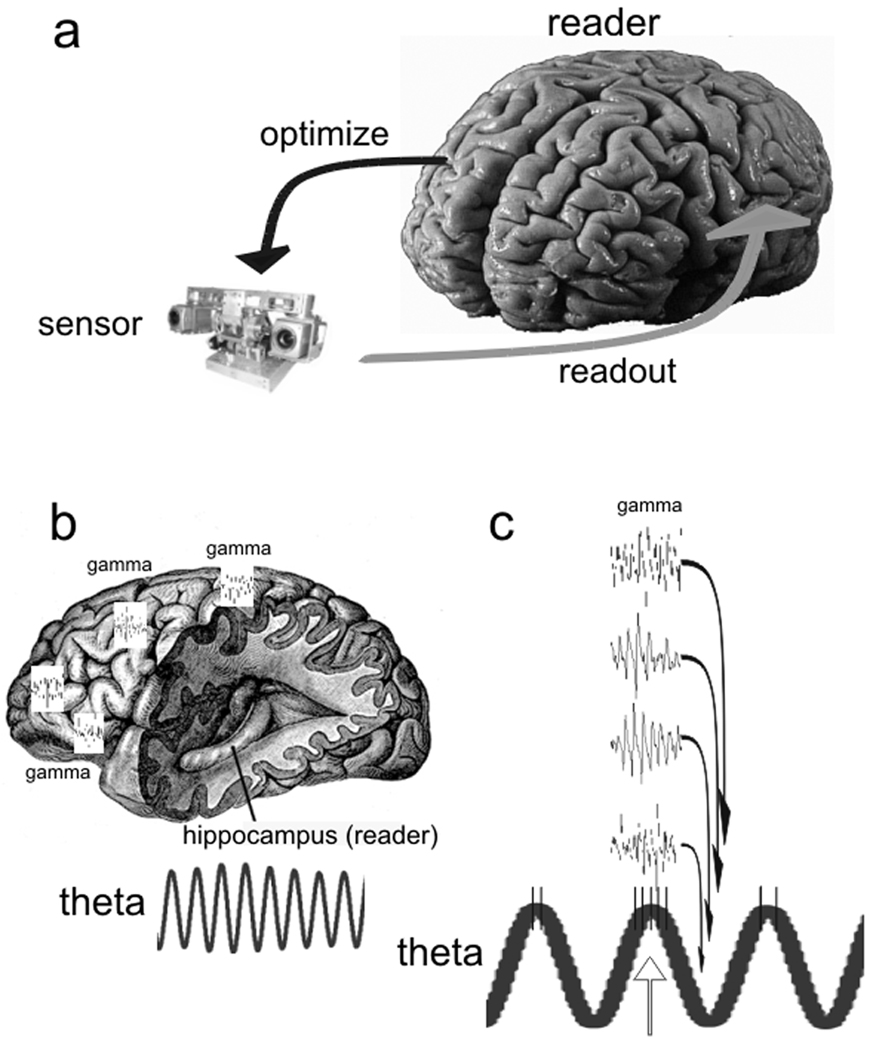Figure 10.

Reader-initiated transfer of information. (a) The reader sends an output command to optimize the sensor. Brain-initiated synchronizing-blanking mechanisms are used in all modalities (such as eye movement, sniffing, whisking, active touch, licking, contraction of middle ear muscles, etc.), which generate transient ‘gains’. (b) Reader-initiated transfer is used at all levels of the brain. In this example, the hippocampus (reader)-generated theta oscillation synchronizes computations in widespread neocortical areas (reflected by transient gamma oscillations). (c) The duty phase of hippocampal theta (white arrow) biases the timing of neocortical circuits so that the results of the local computations are presented to the reader during the accrual (‘readiness’) phase of the oscillation.
